Vitkov Hill, Prague is the site of the Czech National Monument and a statue of Jan Žižka seated on the third largest equestrian statue in the world.
Vitkov Hill separates Zizkov District Prague from Karlin District, a former industrial area of Prague that has transformed to an urban business area with a developing reputation as a gastronomy and entertainment district for the city. These are two areas I had not yet explored in my 12 days in Prague on three different trips in 2017.
I estimate I have walked at least 50 miles around Prague in 2017. Every day I set out on a walk in Prague, places I come across provide better understanding of this magnificent city and its rich cultural history.
An approximation of my walking route on Google Maps shows a 10 km journey on a Monday afternoon in October 2017.
Clarion Prague City Hotel, Vinohrady
I have stayed in luxury hotels in Mala Strana with a view of Prague Castle, Park Inn Prague by the river and an easy walk to Vysehrad Castle, Radisson Blu Alcron in Nove Mesto in the center of city action and walked around many other Prague hotels in Stare Mesto, Old Town.
Vinohrady is my favorite district in Prague. This is primarily a residential area filled with neighborhood pubs and restaurants.
Church of St. Ludmila / Kostel svaté Ludmily (188-1892) at NámÄ›stà MÃru is one of the main landmarks of the Vinohrady area. NámÄ›stà MÃru is also an A line Metro station with direct access to the airport.
Factoid: NámÄ›stà MÃru Prague Metro is the deepest station in the network and the deepest metro station in the EU at 53 meters below ground.
Based on the 200 or so escalator stairs, I thought NámÄ›stà MÃru station might be the deepest as I rode up and down several times during my three stays at Clarion Prague City in the past four months.
Simply walking along the streets of Prague on a sunny day is simple visual pleasure. So many buildings are so attractive.
I walked from Vinohrady to Žižkov District. At 216 meters, Žižkov TV Tower is the tallest structure in Prague and a landmark visible from across the city. I have close up pictures from a previous walk to Olsany Cemeteries described in this Loyalty traveler article link.
Trip Report Day 2 Prague Vinohrady Light and Dark (Oct 7, 2017).
Bumper Bar Zizkov had reggae posters in the windows. I’ll keep this place in mind when I return to Prague next month.
Apparently Zizkov has a traditional working class reputation as a rough neighborhood. These days the streets look pretty gentrified. Kami at mywanderlust.pl states Zizkov has over 300 pubs. No wonder I enjoy this part of Prague so much.
Safety is always of utmost concern in my travels. I did not sense any roughness on the streets in my hours walking around Zizkov. The streets seemed kind of upscale to me in most places.
Husitska Street is at the base of Vitkov Hill. I looked for a stairway up the hill, but after a couple of short dead end road attempts, I walked north along Husitska to find the street route up Vitkov Hill. I walked by several hostels and Indian/Pakistani restaurants with low dining prices. Still not ready for primetime beer drinking, I headed up Vitkov Hill.
The Hussite Wars 1419-1434
A sign on Vitkov Hill provided my first Prague history lesson of the day.
But first, for the reader not familiar with medieval Central European history, here is a two minute basic read on Jan Hus and the Hussites to understand the significance of Vitkov Hill, Prague.
2017 marks the 500 year anniversary of Martin Luther’s ‘95 Theses’ in Wittenburg, Germany. The Protestant Reformation followed, along with 150 years of religious wars with protest and turmoil for the Catholic Church powers seeking to retain control over Europe.
The fruits of the 16th c. Reformation grew in part from seeds planted in Prague, 300 km southeast of Wittenberg, a century before.
Jan Hus statue in Old Town Square / StaromÄ›stské námÄ›stÃ
Jan Hus (1369-1415) was a Czech priest educated at Charles University Prague, the oldest university (1348) in Central Europe. As an educated priest and scholar, Hus rose in ranks within the Prague church hierarchy. Jan Hus was a promoter of essays and sermons by John Wycliffe (1320-1384) of Oxford, England. Wycliffe’s writings were declared heretical by the Pope and Hus was excommunicated in 1410. That same year the pope died.
The Catholic Church was in a European power struggle with different regions supporting different popes as the legitimate Catholic leader. The Church in Prague raised money through indulgences as war funds in the fight for dominance among a Roman pope and and a France anti-pope.
Jan Hus preached Wycliffe’s writings to speak out against the Church raising funds for war. A Hussite and Bohemian nationalist movement developed in Prague and throughout the region for more self-determination, while rejecting blind allegiance to the Catholic Church. Several Hussites were beheaded.
October 1412, Hus left Prague and spent time in the country translating Latin theological text and basic tenets into Czech for education of common priests and laymen.
Council of Constance (1414-1418), a supreme Catholic Church delegation met to resolve the pope matter. They also decided to burn Jan Hus at the stake in 1415.
Followers of Jan Hus launched the Bohemian Reformation and the Hussite Wars followed in a major battle for control in Prague and Bohemia between the Catholic Church and reformers.
This turbulent time fractured Europe as aristocrats, royals, merchant class and working people battled for sides and dominance over regions.
Jan Žižka and Vitkov Hill
The most expensive Czech film ever produced is set to premier in 2018 on the life of Jan Žižka (1360-1424), a Czech general and military leader of the Hussites.
Jan Žižka is a Czech symbol for nationalism. He fought in the Battle of Grunwald (1410), where the Polish-Lithuanian Kingdom defeated the Teutonic Knights, leading to a medieval power shift for Northern and Central European dominance from Germans/Prussians to Poles.
As a Hussite, Jan Žižka led the military resistance to crusaders against Prague led by the Holy Roman Empire and King of Hungary, who called for crusades into Bohemia to quell the Hussite rebellion. Periodic crusades and battles against the Hussites throughout Bohemia persisted for 15 years. Bohemia was wrecked.
Žižka died in 1424 from plague. The Hussite Wars established principles of a Bohemian reformation.
The Battle of Vitkov Hill on July 14, 1420 was a Jan Žižka led Hussite Victory over the Holy Roman Emperor’s crusader forces in Prague. This area of Prague was renamed Zizkov in honor of the Hussite leader.
Czech Republic in 2017 has a far lower proportion of Christians compared to Poland, Slovakia and Hungary. In fact, Czech Republic has the lowest proportion of Christians in Europe for the few European nations with Islam as the dominant religion.
Karlin, Prague
Vitkov Hill separates Zizkov from Karlin in Prague. What I soon learned after scrambling along footpaths in the woods on the hillside is how difficult it would have been to fight on that terrain when the Crusaders seiged the hill in 1420.
Getting to Vitkov Hill was easy, but the challenging part was walking from Vitkov Hill to Karlin. I wasted at least 30 minutes walking up and down the hillside of Vitkov looking for a route to Karlin. The Karlin side of the hill has the main railroad tracks into Prague and there is no pedestrian crossing over or under the tracks…or so I thought.
I knew there was a traffic tunnel through Vitkov Hill. What I now know is there is also a pedestrian tunnel, but I did not know that on the day of my walk.
One person at Vitkov Monument I asked for directions did not mention the Zizkov-Karlin tunnel through Vitkov Hill.
Church of Saints Cyril and Methodius, Karlin
I backtracked to Husitska Street, Zizkov to the road passage under the train tracks and past Florenc bus station, the main station in Prague for long distance trains.
Praha Florenc bus station is a place I have traveled through several times, but always arriving by Metro. My walk now placed this part of Karlin in mental geographic perspective. The more I walk around Prague, the smaller it becomes as the pieces fit together in my mental awareness map of the city.
Kavarna Kocici cat cafe grabbed my attention, but I really wanted a beer after my hillside trek, not coffee.
Church of Saints Cyril and Methodius at Karlin Namesti is one I saw from Vitkov hillside.
A muslim social event was happening in the square with barbecue grills smoking and a woman on stage with a professional sound system singing quite well, very loudly. I expected to see a big gathering, but there were only around 25 people in the square at 3pm on a Tuesday afternoon.
Signature Prague Karlin – Indian food and microbrew beer
Signature Prague is a self-serve Indian restaurant in a modern business building in Karlin, Prague one block from the Vltava River. The dining concept is buffet and you select your own items and pay by weight:
- 23 CZK ($1.05 USD) /100 g vegetarian onlyÂ
- 26 CZK ($1.18 USD)/100g veg/meat combo.
My meal cost about $5 for about 400+ g and $2 beer pint.
After my different kind of dining experience in modern Karlin, I headed back toward Staré Město/Old Town Prague via the river path.
Looking at you on the Vltava looking at me in Prague.
This part of Prague is noisy along the riverfront. Much of the Vltava riverfront along the southern side serves as a major Prague thoroughfare for traffic. It is especially busy as cars speed up heading into Karlin.
Away from the riverbank and road traffic the city becomes Staré Město/Old Town with a high tourist population.
I tend to spend limited time in Old Town due to the high density of tourists and high prices of restaurants and pubs, relative to prices in other parts of Prague. Many pubs charge 50% more and others more than double the price for a pint of beer (70-100 CZK) compared to the average price in Prague (38-46 CZK).
Náměstà Republiky/Republic Square
Republic Square is a major square separating Old Town from New Town Prague. Those dateline names are relative by American standards since New Town is still centuries old.
Municipal House on Náměstà Republiky might be the most photographed Art Nouveau building in Prague.
Republic Square is named for 28th October 1918 when the republic of Czechoslovakia was proclaimed at Municipal House.
Hibernia Divadlo
Quite interesting about Hibernia Divadlo is the origin of the name Hibernia is from 1630. Ferdinand II, Holy Roman Emperor from House of Hapsburg, granted Irish priests land in Prague for a monastery in 1630. The Catholic priests had been kicked out of England by Elizabeth I and were hanging out in the Netherlands for years, like the Pilgrims.
Hibernia Theatre is on this site.
Estates Theater, part of Národnà divadlo / Prague National Theatre
Estates Theater is famous these days for Mozart having premiered his Don Giovanni opera there in 1787. Don Giovanni is still one of the top 10 most performed operas worldwide in the past decade. There is a ghostly statue and a plaque on the outer wall.
Prague Estates Theater is the only theater remaining where Mozart performed.
The night before this walk, while sitting in the backyard of a pub in a residential neighborhood of Vinohrady at 10pm on a Monday night, I read an online article about Mozart.
Where did Mozart drink in Prague?
There were no definitive pubs named, so I was inspired to find the oldest looking pub in Nove Mesto and have a beer for Mozart. While Mozart wrote letters about his like for drink, he did not name names in Prague.
The movie Amadeus introduced me to Mozart’s tunes in 1984 and made me a big fan for about a year, then I returned to a rocks roots focus for my listening tastes.
U Dvou Kocek
U dvou kocek tells a 340-year history inside. The current pub dates from 1927. Pubs having existed on this site for centuries. Perhaps Mozart drank here.
One thing for sure – Mozart did not drink Pilsner Urquell poured out of a tank adorned with cat figures. Check out their webpage for a photo of the Pilsner Urquell tap cats on the homepage.
Pilsner Urquell lager launched a 19th century ‘beer reformation’ when lager was first created and distributed in 1842.
Franz Kafka’s Head
A good place to trip out is with Franz Kafka’s Head. Lots of metal surfaces for creative photo opportunities. The web link shows a fast motion video of Kafka’s head movement.
For my last meal in Prague I returned to Beer and Burger U Cizko. Kelley and I ate there in July and I remembered there was good music and beer and hamburgers with fries. Prices for burgers are higher than average for Prague, but I enjoy the vibe.
I walked back to Clarion Prague City for an early night in the room.
The heat wave of daily temperatures at least 70 degrees for this day and the previous 8 days in France, Greece, Bulgaria and two days in Prague in mid-October broke the following morning when I woke up to fog and a temperature drop down to 10C/50F. I packed to leave for Prague Airport and British Airways flights home to California.
Prague Last Looks
Prague Walking Tours
On at least four occasions in 2017 I have spent the day walking around Prague, probably 10 miles or more each time, yet I have only covered areas still within the tourist zone of this city of 1.25 million. Prague is an urban area spread across nearly 200 square miles. I estimate all my walks have been within a 16 square mile area on both sides of the Vltava River. Only once have I walked more than two miles away from Vltava River. That walk is described in October Trip Report Day 2 below, the day I visited Olšany Cemetery in Vinohrady.
Loyalty Traveler
October 2017 Prague posts:
Trip Report Day 1 SJC-LHR-PRG
Trip Report Day 2 Prague Vinohrady Light and Dark
Trip Report Day 3 Prague party street Křemencova Nové Město
Prague chain hotel reward rates map
July 2017 Prague posts:
Prague, Czechia: Pickpocket stole my wallet on Prague Airport Bus
Prague, Czechia: Park Inn Prague hotel review
Prague, Czechia: Best Western Hotel Kinsky Garden Prague truly boutique
Prague, Czechia: Hotel review Clarion Prague City reward stay
Prague, Czechia: Vyšehrad, Prague far from the madding crowd
January 2017 Prague Posts:


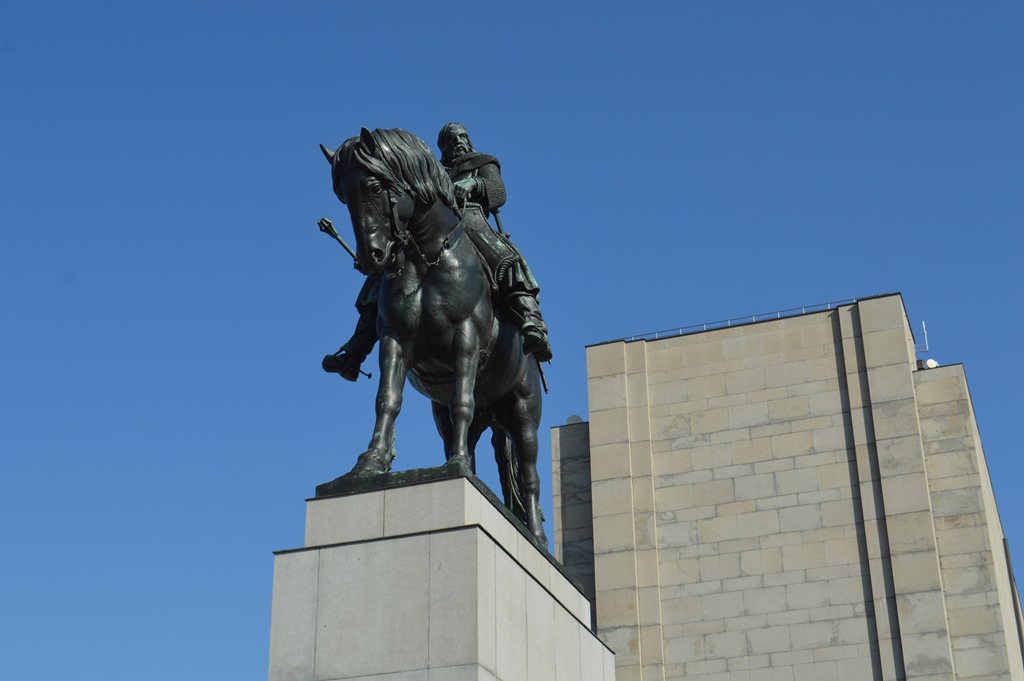

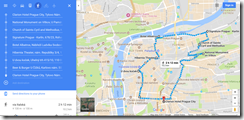
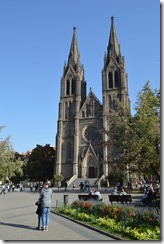
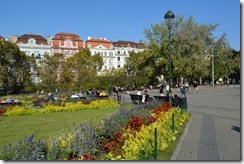

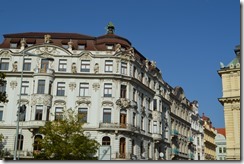

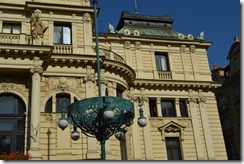
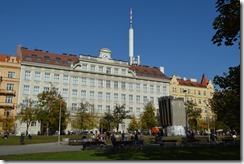
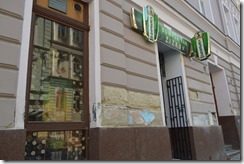


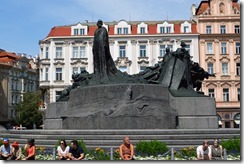
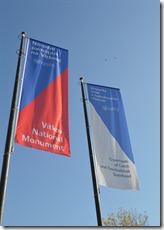
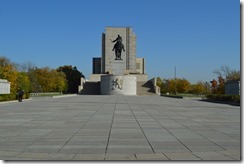
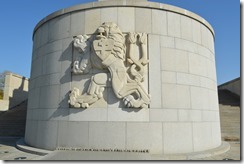
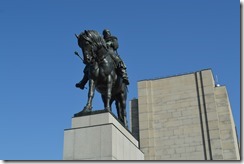
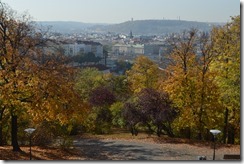
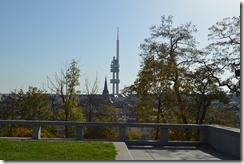
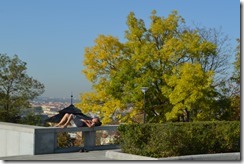
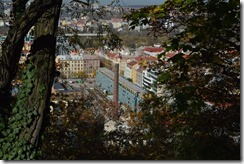
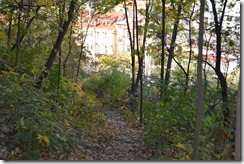
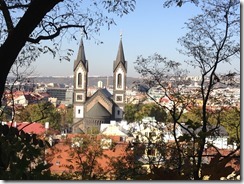
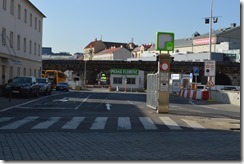
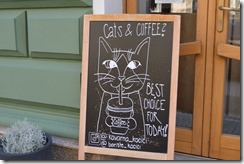
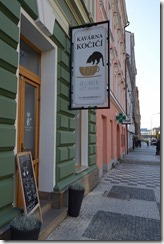

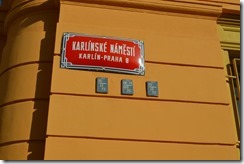
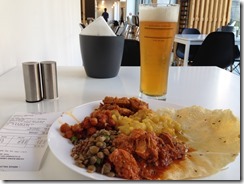
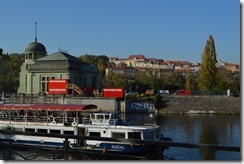
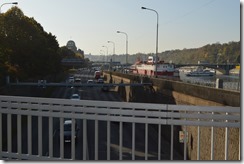

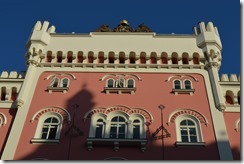
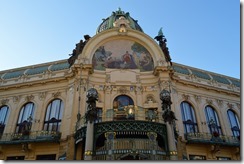
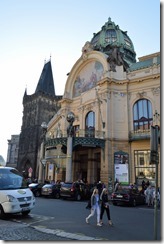
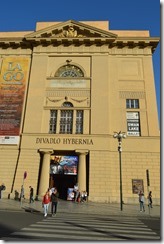
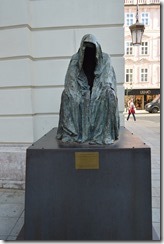
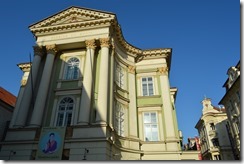
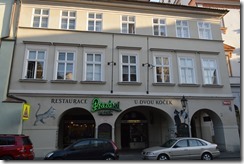
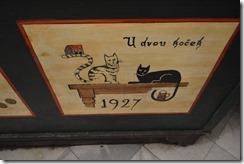
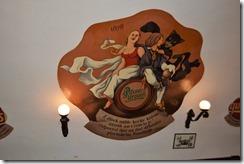
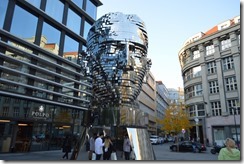

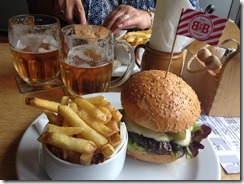
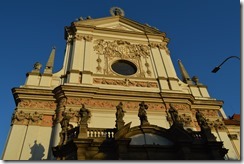

4 Comments
Comments are closed.